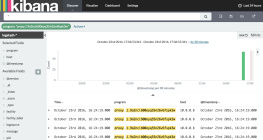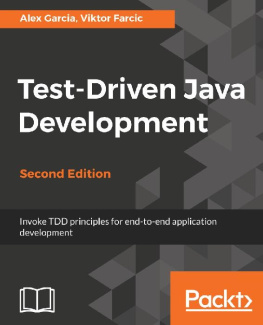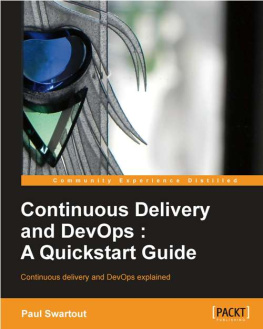His big passions are Microservices, Continuous Deployment and Test-Driven Development (TDD).
He often speaks at community gatherings and conferences.
www.PacktPub.com
eBooks, discount offers, and more
Did you know that Packt offers eBook versions of every book published, with PDF and ePub files available? You can upgrade to the eBook version at > for more details.
At www.PacktPub.com, you can also read a collection of free technical articles, sign up for a range of free newsletters and receive exclusive discounts and offers on Packt books and eBooks.
https://www2.packtpub.com/books/subscription/packtlib
Do you need instant solutions to your IT questions? PacktLib is Packt's online digital book library. Here, you can search, access, and read Packt's entire library of books.
Why subscribe?
- Fully searchable across every book published by Packt
- Copy and paste, print, and bookmark content
- On demand and accessible via a web browser
Preface
I started my career as a developer. During those early days, all I knew (and thought I should know) was to write code. I believed that a great software designer is a person that is proficient in writing code and that the path to the mastery of the craft was to know everything about a single programming language of choice. Later on, that changed and I started taking an interest in different programming languages. I switched from Pascal to Basic and then ASP. When Java and, later on, .Net came into existence, I learned benefits of object oriented programming. Python, Perl, Bash, HTML, JavaScript, Scala. Each programming language brought something new and taught me how to think differently and how to pick the right tool for the task at hand. With each new language I learned, I felt like I was closer to being an expert. All I wanted was to become a senior programmer. That desire changed with time. I learned that if I was to do my job well, I had to become a software craftsman . I had to learn much more than to type code. Testing became my obsession for some time, and now I consider it an integral part of development. Except in very special cases, each line of code I write is done with test-driven development ( TDD ). It became an indispensable part of my tool-belt. I also learned that I had to be close to the customer and work with him side by side while defining what should be done. All that and many other things led me to software architecture . Understanding the big picture and trying to fit different pieces into one big system was the challenge that I learned to like.
Throughout all the years I've been working in the software industry, there was no single tool, framework or practice that I admired more than continuous integration ( CI ) and, later on, continuous delivery ( CD ). The real meaning of that statement hides behind the scope of what CI/CD envelops. In the beginning, I thought that CI/CD means that I knew Jenkins and was able to write scripts. As the time passed I got more and more involved and learned that CI/CD relates to almost every aspect of software development. That knowledge came at a cost.
I failed (more than once) to create a successful CI pipeline with applications I worked with at the time. Even though others considered the result a success, now I know that it was a failure because the approach I took was wrong. CI/CD cannot be done without making architectural decisions. Similar can be said for tests, configurations, environments, fail-over, and so on. To create a successful implementation of CI/CD, we need to make a lot of changes that, on the first look, do not seem to be directly related. We need to apply some patterns and practices from the very beginning. We have to think about architecture, testing, coupling, packaging, fault tolerance, and many other things. CI/CD requires us to influence almost every aspect of software development. That diversity is what made me fall in love with it. By practicing CI/CD we are influencing and improving almost every aspect of the software development life cycle.
To be truly proficient with CI/CD, we need to be much more than experts in operations. The DevOps movement was a significant improvement that combined traditional operations with advantages that development could bring. I think that is not enough. We need to know and influence architecture, testing, development, operations and even customer negotiations if we want to gain all the benefits that CI/CD can bring. Even the name DevOps as the driving force behind the CI/CD is not suitable since it's not only about development and operations but everything related to software development. It should also include architects, testers, and even managers. DevOps was a vast improvement when compared to the traditional operations by combining them with development. The movement understood that manually running operations is not an option given current business demands and that there is no automation without development. I think that the time came to redefine DevOps by extending its scope. Since the name DevOpsArchTestManageAndEverythingElse is too cumbersome to remember and close to impossible to pronounce, I opt for














